The machine that changed my life
By Graham Littlejohn, Dental Technology Services Group
It’s a very sad week in the life of our company (DTS and Core3dcentres UK), as today we decommissioned our very first Lava milling machine. Why have so much emotion about a piece of machinery? Well, because it single-handedly changed and transformed the way we worked our dental laboratory, and our thinking has never been the same again.
Twelve years ago we were a traditional dental lab working in both crown and bridge and prosthetics, relatively successful and comfortable with our company. In crown and bridge we had a good reputation for veneers, completed a few implant cases – as rare as they were then – and had embraced this new product from Nobel Biocare called Procera. In fact, we had embraced it so well we made more Procera than any other dental laboratory in the UK.
However, our customers were crying out for bridgework. We waited and waited for the promise of Procera bridges and, when delivered, the initial process bridges were a bit of a disaster as they involved scanning and receiving the bridge in multiple parts so the lab had to bond the pieces together.
Within the first year that machine was milling just under 1,000 units a month, much more than anyone recommended or thought it could do
Graham Littlejohn
It was at this point that my father heard from his colleagues in Europe that a company called Espe had developed this new material and technique which could deliver crowns and bridges. However, it was not like Procera, where we scanned and sent away for the black magic to happen and they sent back a crown that fitted, we needed to make these ourselves in house with CAD/CAM. What is CAD/CAM was our first question. Oh, how times have changed!
We travelled over to Seefeld in Germany to see these wondrous machines and scanners. We came home impressed by the technology but panicked by the cost. No one had even heard of Zirconia and what a stupid name for a dental material – “Lava”… Surely lava is black not white?
- Graham Littlejohn
- The Lava machine before decommissioning
- Spare parts are removed to service DTS’s three other machines
- The machine is taken away…
- …and loaded onto a lorry to be driven away
- A fond farewell from DTS staff
I remember very well our first meeting back in the office at home with my father and my two brothers. Can we afford the investment? The biggest investment as a lab we had made previous to this was maybe a porcelain furnace or the Procera scanner at around £30,000 maximum. This was an investment, not just in the machine, but in the equipment, training and space required to run a milling machine. From memory, we invested around £180,000 in preparing and buying that first lava milling machine. Then there was the marketing so dentists knew what it was.
We were so naïve. Little did we know the pain and the learning curve we would encounter. Just at the same time as we ordered the Lava mill, 3M bought the Espe company. So, to add to us not knowing what we were doing, neither did 3M. Complete pandemonium ensued.
We marketed this new “lava” product with flyers featuring volcanos and flames shooting out of them. Anyone who has had dealings with the 3M marketing department will tell you that they don’t like you messing with their brand image, so we got a letter telling us, in no uncertain terms, to “stop it” or legal action would follow. We are only trying to sell your product was our answer. “Stop it now,” was theirs.
As I was the youngest partner in the company, obviously I must know about computers. I was therefore put in charge of the day-to-day running of the machine. I will always remember the (many) times when I had my phone clamped between my ear and my shoulder, speaking phonetic English to a German technician trying to change broken parts rather than pay the price of flying someone over every time it broke down.
And did it break down? Oh yes. I had no idea that machines could be vindictive. We were trying to build a market which had never heard of Zirconia so the machine needed to reliably supply frameworks when we managed to get our customers to change. Typically the most important and time critical cases were the ones where something went wrong. The machine, on one occasion, tried to self-mutilate; rather than milling the zirconia block, it decided to drill a hole in its own arm. Yippee, how fun that was.
Anyway, with all that said, once we made the leap, like all dental technicians up against the wall we made it work. We learned fast, we adapted and we made it a success. So much so that we modified the machine’s loader, that could initially only take 20 blocks, with cardboard pieces to extend the height of the loader to be able to run all night long. Within the first year that machine was milling just under 1,000 units a month, much more than anyone recommended or thought it could do. Within two years we had four Lava mills all running at full capacity. We made every Lava crown and bridge framework in the UK for almost four years.
That Lava milling machine started our journey to digital manufacturing. It taught us everything we needed to know about working (and repairing) a milling machine. Now, as we look at our business, 75 per cent of all our crown and bridge cases are made with CAD/CAM technology. It seems a distant memory of those first days of the Lava milling machine.
We now run more than 15 milling machines from our UK site and hundreds worldwide through our global Core3dcentres digital manufacturing sites. Not only that, we have multiple oral and lab scanners. Maybe another day, when it’s less raw, I will write fondly about our 3D printers.
So, after 12 years and almost 250,000 units from that one machine, our business is different now, and better.
Today as I watch it being stripped of all its valuable working parts (we still have another three we can use parts on and I am Scottish) I see the guts of the machine – all covers removed with cable ties and small bits of wire I used to bypass sensors rather than calling the German engineer – I can’t help thinking what my life would be like now if we hadn’t made that leap of faith. It would definitely be different (with maybe a little more hair) and our business would not have grown into our new digital future.

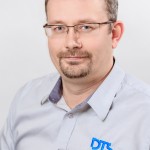
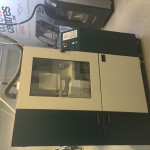
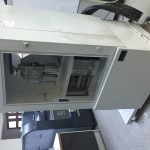
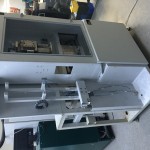
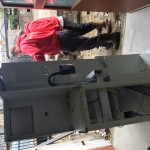
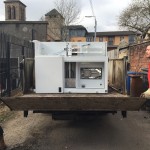
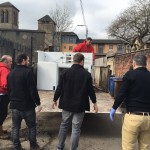
Comments are closed here.